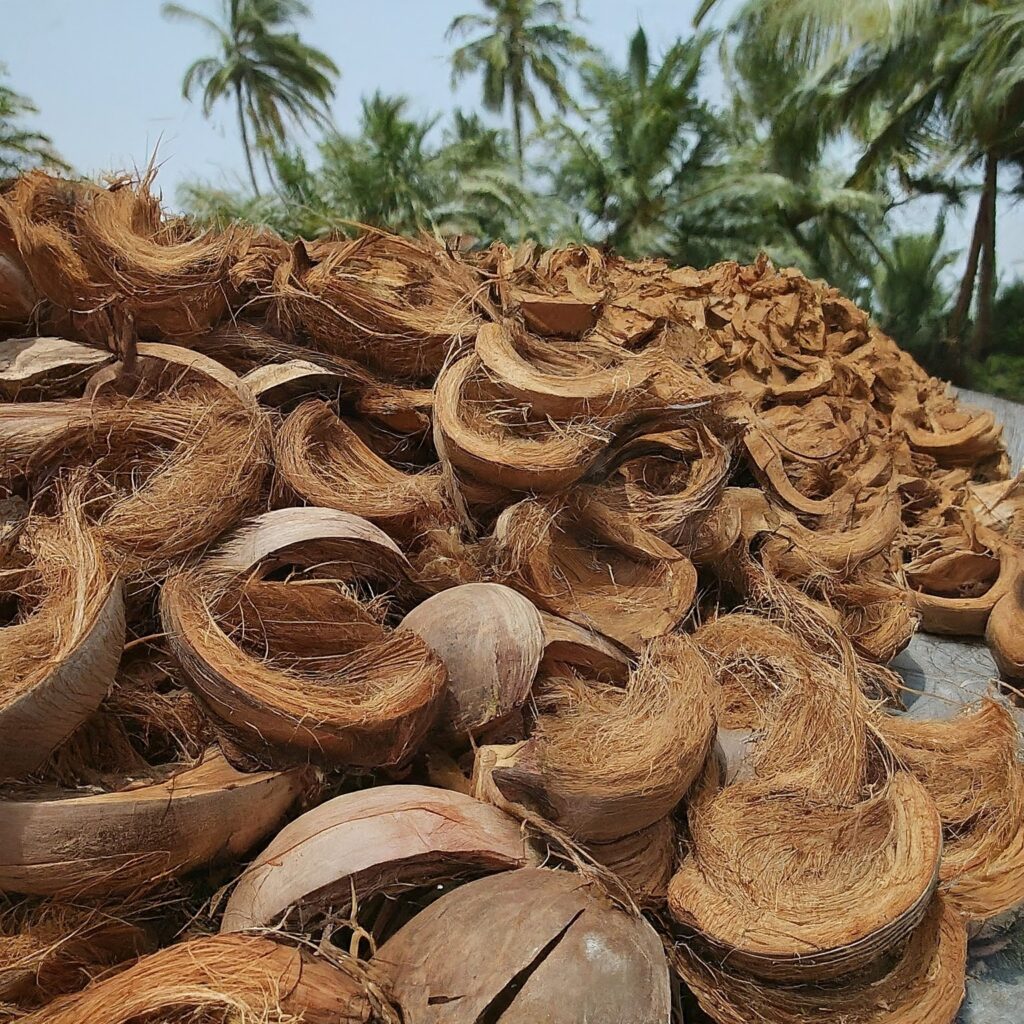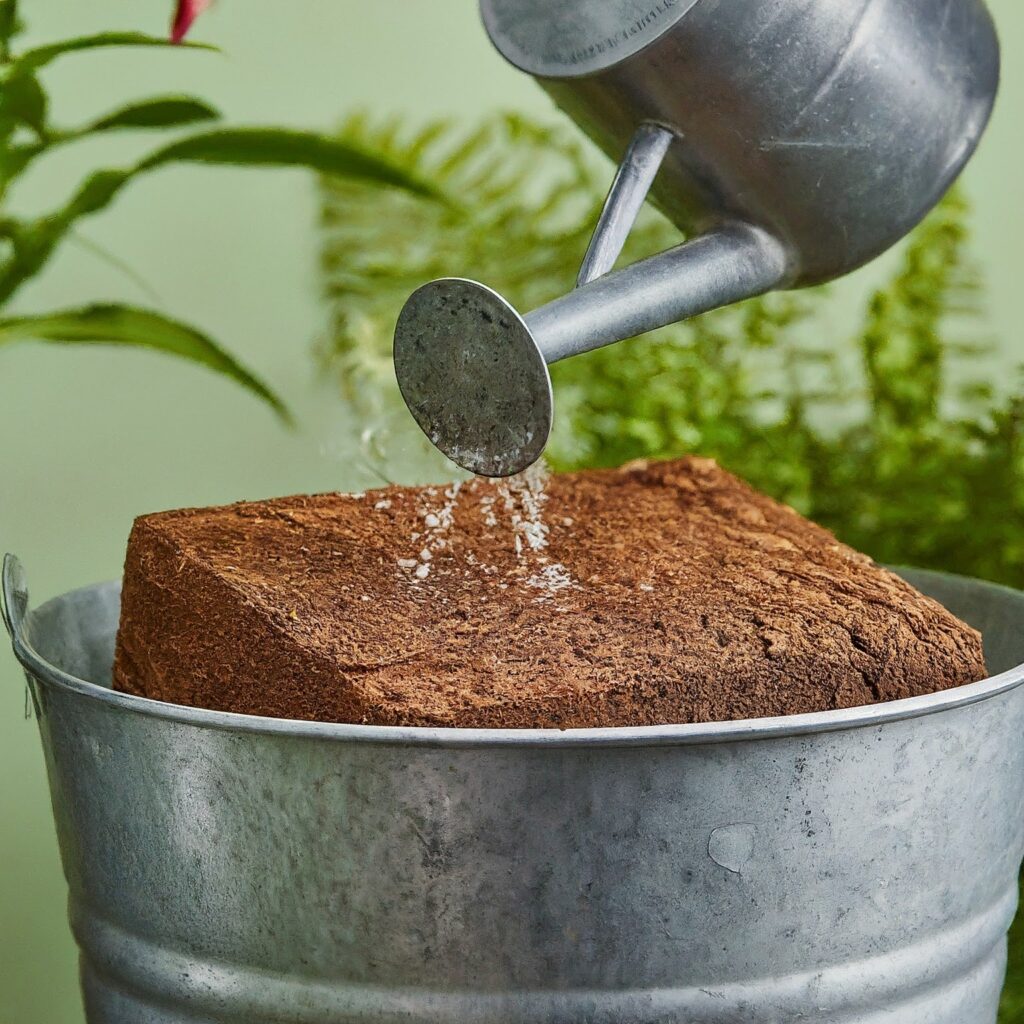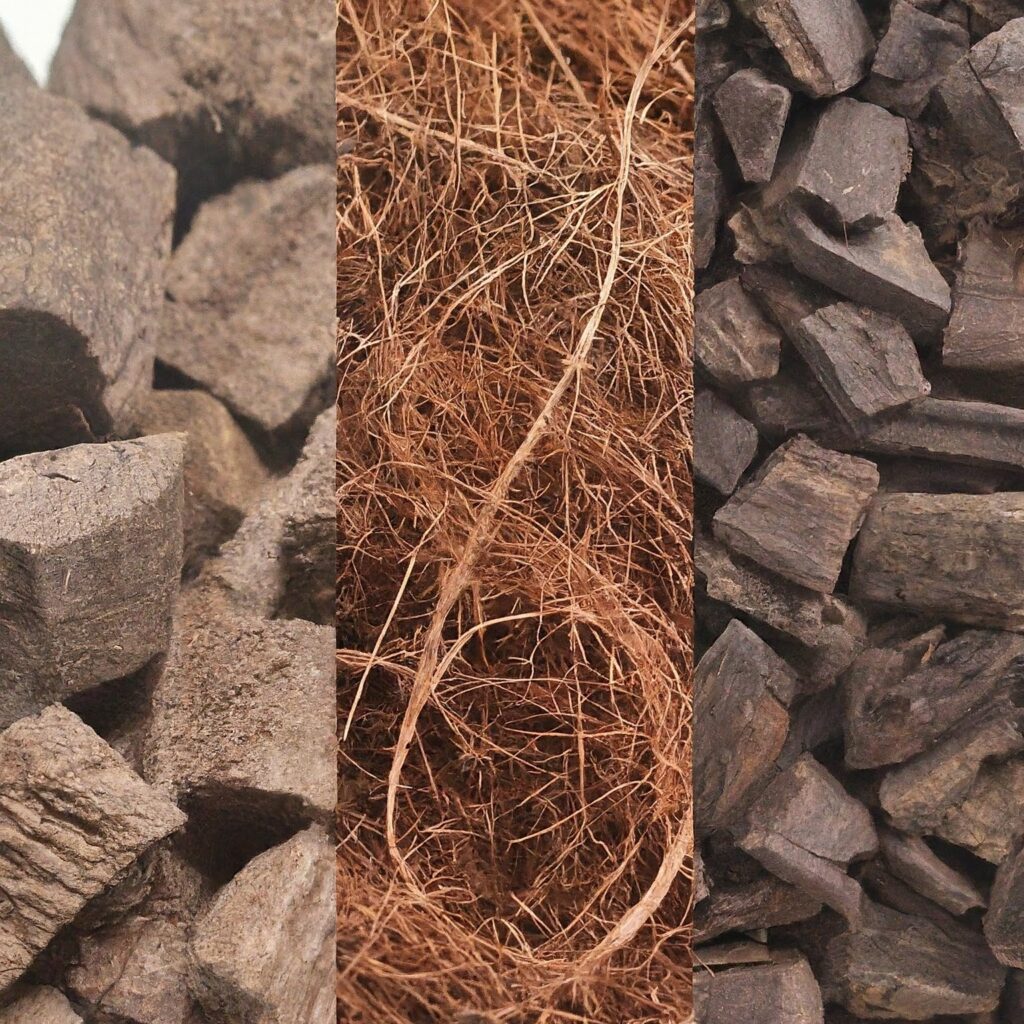Everything You Want to Know About Coconut Coir
Coconut coir is a versatile and widely used soil amendment and hydroponic medium. But what exactly is coco coir and where does it come from?
Jump to a section:
What is Coco Coir?
Coconut coir comes from the fleshy area of the coconut, known as the core. It is the part between the coconut flesh and the outer seed husk.
In the past, coconut coir was considered a waste product, but in recent decades, it has gained popularity both in home gardening and hydroponics.
Coconut coir is organic and biodegradable, making it an environmentally friendly choice for gardeners. This material has excellent drainage properties that help prevent plants from becoming waterlogged.
It also has good aeration properties, which allow for better root growth. It can hold a significant amount of water, keeping plants hydrated between waterings.
Coconut Coir Processing

When coconut coir is collected, it has to be rinsed and cleaned. This cleaning process is usually done in freshwater, but sometimes it is done in tidal waters. If cleaned in tidal waters, the coconut coir absorbs salt, which needs to be flushed out later. The quality of this material depends on how well it has been flushed, cleaned, soaked, and dried.
Coconut coir is processed into various types of products, including dehydrated compressed coconut coir bricks. These bricks are an economical way to buy and use coconut coir because they can be shipped easily. When expanded, one brick can yield a significant amount of coconut coir for gardening purposes.
The Benefits of Coconut Coir
Coconut coir offers several advantages over other soil amendments and hydroponic mediums. Let’s take a look at some of its benefits:
- Cost-Effective: Compared to other popular growing mediums like peat moss, coconut coir is inexpensive. This makes it an attractive option for both home gardeners and large-scale farming.
- Sustainability: Coco coir is an environmentally friendly alternative to peat moss, which is a commonly used soil amendment that faces criticism for its environmental impact. Peat moss growth takes a super long time and harvesting it is not sustainable. Coconut coir, on the other hand, is leftover from making coconut products and doesn’t hurt the earth.
- Easy Transition: In hydroponic systems, where plants grow without soil, coconut coir provides a more natural environment for roots to develop compared to traditional mediums like clay pebbles or perlite. These inorganic mediums can sometimes hinder root growth and appear visually unappealing. Coconut coir offers a more organic aesthetic that can be beneficial for certain applications, while still delivering the necessary support and drainage for healthy hydroponic plants.
- Improved Drainage and Aeration: Unlike some organic materials that can become compacted, coco coir has excellent drainage properties. This allows excess water to flow freely, preventing root rot caused by waterlogged soil. At the same time, the fibrous nature of coir provides ample air pockets, promoting healthy root oxygenation for optimal growth.
- Enhanced Nutrient Availability: Coconut coir has a high cation exchange capacity (CEC). This means it effectively holds onto essential nutrients like potassium, magnesium, and calcium, and then gradually releases them to plant roots as needed. This sustained nutrient availability promotes healthier, more vigorous plant growth and reduces the need for frequent fertilization.
- Versatility for Different Plants: The beauty of coco coir lies in its adaptability. It can be used directly as a soilless growing medium, or amended with other ingredients like perlite or compost to create customized blends suitable for specific plant needs. This versatility makes it ideal for a wide range of plants, from moisture-loving vegetables to cacti requiring excellent drainage.
- Weed Suppression: When used as a mulch material around established plants, coco coir helps suppress weed growth. Its thick layer restricts sunlight penetration, hindering weed seed germination and smothering existing weeds. This translates to less time spent weeding and more time enjoying your flourishing garden.
- Promotes Beneficial Microbes: Coconut coir offers a natural habitat for beneficial bacteria and fungi in the soil. These microbes play a crucial role in plant health by breaking down organic matter, improving nutrient uptake, and fending off harmful pathogens. This creates a thriving ecosystem in the root zone, fostering optimal plant growth.
Coconut Coir Downsides
While coconut coir offers a wealth of benefits, it’s important to be aware of some potential drawbacks before incorporating it into your gardening routine:
- Nutrient Deficiencies: Coconut coir itself contains minimal nutrients. While it holds onto nutrients well, you’ll need to supplement your plants with fertilizer to ensure they get everything they need to thrive. This can be a minor inconvenience for experienced gardeners, but beginners may require some additional research to choose the appropriate fertilizers.
- pH Fluctuations: Fresh coconut coir can sometimes have a slightly high pH level, which might not be ideal for all plants. A simple pH test and adjustments with additives like lime or sulfur can usually address this. However, it’s an extra step to consider compared to using pre-mixed potting soil.
- Salt Concerns: Depending on the processing methods, some coconut coir may contain residual salts from salt water rinsing. While thorough flushing by the manufacturer helps mitigate this, a quick rinse at home before use can provide added peace of mind, especially for salt-sensitive plants.
- Proper Issues: Coconut coir has excellent water retention properties, which can lead to drainage issues if used in excess. We recommend you use a maximum of one-third coconut coir in soil mixtures to ensure proper drainage.
How to Use Coconut Coir

Compressed coco coir typically comes in bricks.
To use it, simply place the brick in a large container and cover it with warm water. The coir will expand significantly, so choose a container that can accommodate this growth. Let it soak for several hours, up to overnight, until fully hydrated. Fluff it up with your hands to ensure even moisture distribution.
Depending on your plant’s needs, you can amend the coco coir for optimal results.
For improved drainage and aeration, consider mixing it with perlite or pumice. If you plan to use it directly for seed starting, you might not need any amendments.
For established plants, mix it with compost or worm castings to add nutrients.
Once your coco coir is hydrated and amended (if desired), you’re ready to plant!
Simply fill your pots or garden beds with the coir mix. Then plant according to the specific needs of your chosen plants, ensuring proper depth and spacing.
Types of Coconut Coir Products

While coconut coir is commonly referred to as a single product, there are actually different types of coconut coir products available:
- Cocoa Peat: This is the most common form of coconut coir, where the core husk is ground down into a granular texture.
- Cocoa Fiber: Cocoa fiber consists of long fibers that are not yet chopped or ground. It is often used as a mulch layer.
- Cocoa Chips: Cocoa chips are similar to wood chips and can be used as mulch.
How to Choose the Best Coco Coir
Once you’ve decided on the type of coconut coir, take a moment to assess its quality. Look for a rich, brown color and a pleasant, earthy smell. Avoid coir with an overly salty odor or a grayish hue, as these could indicate improper processing.
While some coco coir comes pre-rinsed, we recommend you give it a quick rinse at home, especially if you plan to use it for salt-sensitive plants. This removes any residual salts that may be present and ensures a clean growing medium for your plants.
Fresh coir can sometimes have a slightly high pH level. If you want to use it directly for seedlings or for plants that prefer acidic soil, a pH test and adjustments with lime or sulfur might be necessary. Purchasing pre-buffered coir can eliminate this step, but it’s not always readily available.
Finally, consider buying coco coir from companies committed to sustainable practices. Look for certifications like OMRI (Organic Materials Review Institute) to ensure responsible sourcing and processing of the coir.
Final Thoughts
Coconut coir is a versatile and cost-effective soil amendment and hydroponic medium. Its unique properties make it an excellent alternative to other mediums like peat moss, perlite, and clay pellets. It offers benefits like improved water retention, efficient shipping, and sustainable gardening practices.
Whether you’re an avid gardener or a hydroponics enthusiast, coconut coir is worth considering for your next project.

